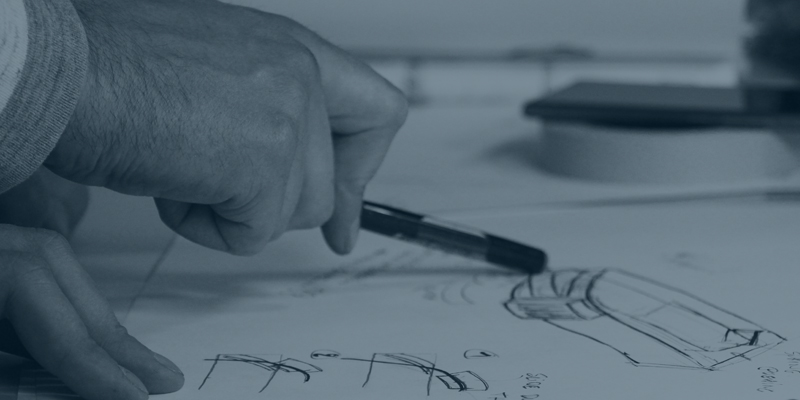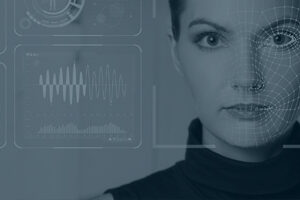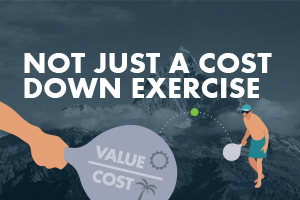Innovation is rarely just about a new technology. People don’t buy technology anymore, they buy a meaning, a purpose. Furthermore, we notice a shift from tangible to virtual products and reverse: as more services are digital, real-world experience becomes more meaningful. The challenge is to augment or replace physical products with digital ones, on the condition that you add value, and to redesign physical experiences to give it a new meaning.
Both in B2B as in B2C markets, users become more demanding. By designing new products and services based on the unmet needs, you can create a sustainable difference. This perspective is helpful for anyone who wants to improve their existing product or service.
What is ‘user-centric’ product design?
Defining the concept
User-centric design is very often confused with human-centered design. However, there’s a difference: all users are human, but not all humans will be your user.
User-centric design requires a profound understanding of ‘your’ users. It’s about defining particular habits and unmet or unarticulated needs of target users to come up with a product that is desirable and usable.
To create products that your market will use and desire, your innovation teams should involve users throughout the entire innovation process. This means from gathering insights at the beginning of your project until validation at the end of the development. Even when your product is in the market, you should monitor your user to have a good understanding of the actual usage.
 User-centric innovation is an iterative process
User-centric innovation is an iterative process
‘User-centric’ design is a process
User-centric design is an iterative process in which the team focuses on the users and their needs during the entire design process. This starts with understanding the context of use and ends by evaluating the proposed design solutions.
Why ‘user-centric’ product design
Design driven vs. technology driven innovation
Unlike technology-driven innovation, design-driven innovation is an innovation approach based on the assumption that people don’t just purchase products or services based on the technical performance, but also on the experience.
The condition to make design-driven innovation successful, is to start from the correct ‘interpretation’ of the users’ needs and wishes. These needs and wishes then need to be translated in a ‘meaningful’ product or service.
Design-driven innovation has the potential to change or even create markets.
When you try to merge design and technology-driven innovation, you may find a real breakthrough innovation. Breakthrough innovation cannot exist without a meaning or purpose for the user. Technology alone will never survive … That’s why ‘user-centricity’ should be integrated into your innovation process.
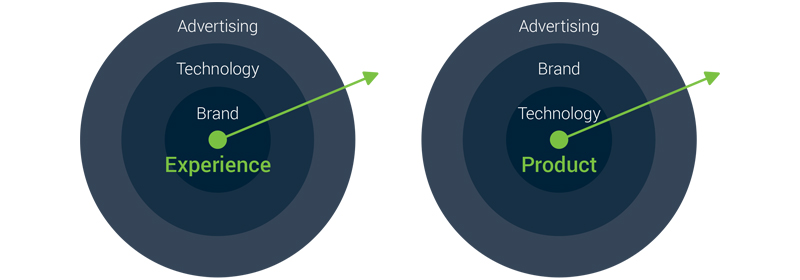 There is a difference between purely product-oriented or experience-oriented innovation
There is a difference between purely product-oriented or experience-oriented innovation
Revolution or evolution
Sustainable innovation isn’t about either evolution or revolution, it’s about both. Evolution tends to optimize the world as is, whereas revolution tends to create the world as it could be. This means that evolution needs a revolution in order to explore the future potential and revolution can’t survive without evolution.
From a ‘user-centered design’ perspective, you can also consider creating a competitive advantage by creating/designing a new market instead of redesigning or reinventing your product in your current market.
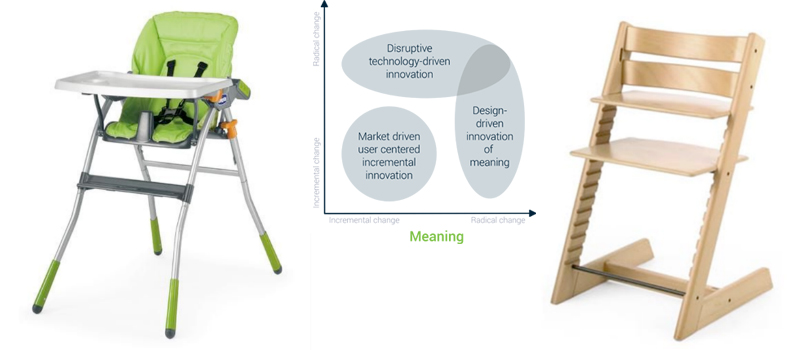 The Scandinavian brand Stokke changed the highchair market with ‘the chair that grows with the child’
The Scandinavian brand Stokke changed the highchair market with ‘the chair that grows with the child’
Differentiation strategy
Form follows strategy
The principle ‘Form follows function’ can generally be associated with late 19th and early 20th-century architecture and industrial design. The idea behind it, is that the shape of a building or object should primarily relate to its intended function or purpose.
Nevertheless, if we look at today’s product design, we can see that the ‘form follows function’ principle became less relevant. Consider at car design, for example. These designs are clearly more driven by emotions, and often with a very specific audience in mind. This means that design should be driven by strategic objectives, and not the other way around. Although exceptions do exist, business objectives should define design objectives, and not the other way around.
This notion indicates that a modern designer should talk, act and think in business objectives, too. In other words, a modern designer should embrace the business side of design. Design should not be the end goal, but an instrument to express the position of your product and service.
 Although functionally almost equal, the design strategy of these 2 radios is completely different.
Although functionally almost equal, the design strategy of these 2 radios is completely different.
Value driven design
One of our favorite tools to merge design and business is the Value Driven Design method. It streamlines the design process because it allows creating a blueprint of the future product before starting the design process as we know it. In addition, it allows discussing collaboratively on how to position your product and how to differentiate against competition. The representation of this method is based on the famous Blue Ocean framework. Basically, it breaks your future product down in several attributes with a certain value in the perception of the user.
Think of successful products you use in your daily life. Suppose you need to describe them with adjectives, as if they were people. I guess it’s easy to do … The first adjectives that come up are – in your perception – the main values. Try it yourself, you can easily describe a product and therefore understand it’s design by bringing it down to several values. The car industry is an extremely common example of this. Safety is the key differentiating value, which is the car’s main design driver, and which translates into thick doors and curved taillights to emphasize the robust contour.
Going back to your product or service: your values can be individually tuned (increasing or decreasing) by design. The Value Canvas allows you to define your design strategy even before one design is sketched on paper. You don’t need to be a designer to start creating. Break down your product in a long list of key values. Plot them on the value canvas and discuss with the team how your user/customer might perceive them today.
Now, the cool thing about this technique is that you can plot competition, as well. Try to figure out how customers perceive the competition on the same values. What can you do about it? Can you improve the design perception? Maybe it’s better to focus less on a specific value, because the competition has been claiming it for years already. For example: BMW’s main value is ‘driving experience’. Does this mean that their cars are less safe than Volvo’s cars? No, not at all. But a customer can only absorb a limited number of key values. So you don’t need to be better in everything, you need to focus on the values that you can tweak, or that are still under-explored in the market.
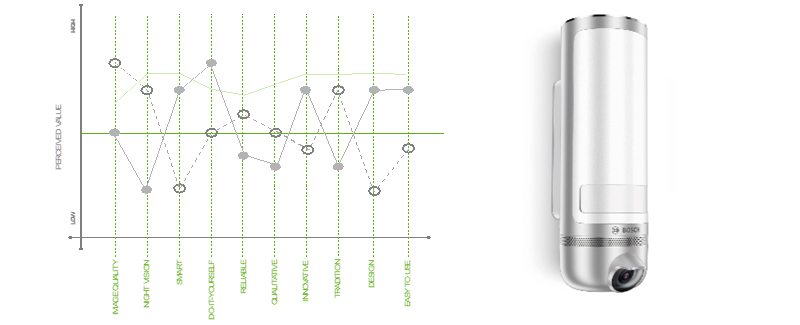 Design strategy of a surveillance camera plotted on a graph, indicating the attributes that could be highlighted by the design to differentiate from the competition.
Design strategy of a surveillance camera plotted on a graph, indicating the attributes that could be highlighted by the design to differentiate from the competition.
Download the perspective to continue reading on how to make your product user-centric.
Looking for solutions to innovate?
Leave us your email and get in contact with Thomas Van Kerkhoven, Manager Innovation Acceleration Services ‘Strategic innovation’, to help you with your innovation process.


